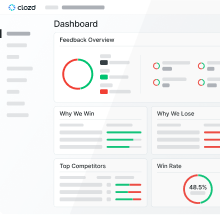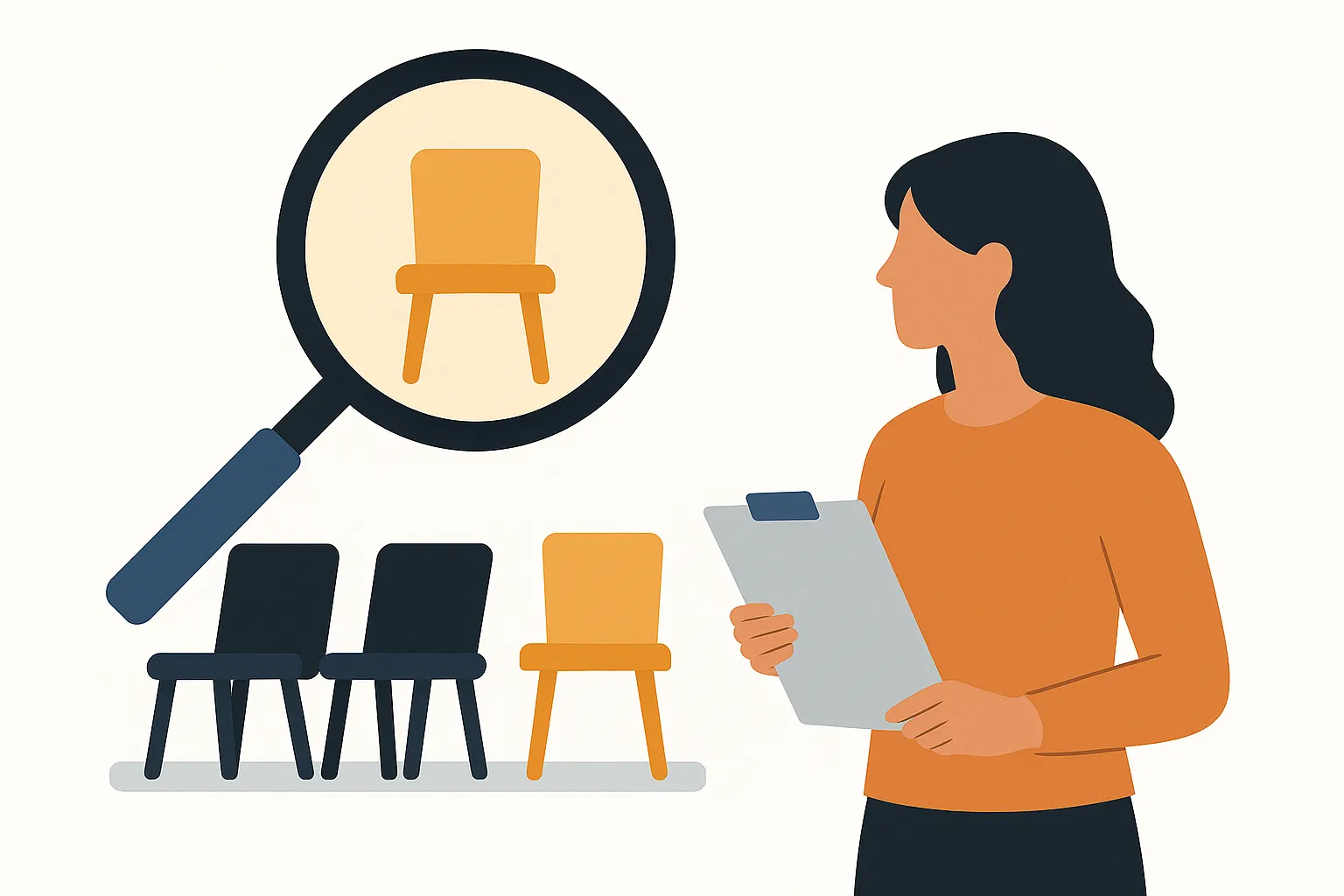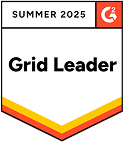
Braydon Anderson, VP of Operations, and Jonathan Stevens, VP of Consulting, at Clozd talk through the best tips for creating win-loss analysis programs derived from their time working with enterprise B2B companies. Whether you’re looking to create a win-loss program or have one that you’re looking to up-level a bit, here are eight practical tips that you can implement today.
Determine what you want to get out of your win-loss analysis program
Of course, if you’re conducting win-loss interviews or surveys, your goal is to understand why you’re winning and losing deals. But beyond that, many times, there are specific problems to be solved or questions to be answered. Maybe there’s a specific group of people within your buyer base that your product or service isn’t resonating with. For example, we want to know why we win or lose against x competitor in y region -- whatever it is, determining a specific outcome beforehand will help reach that outcome.
Get buy-in
All too often, win-loss analysis programs live in a silo. The earlier you can get cross-functional support for the program, the more likely it is to succeed. Working with functional leaders to design the program early will ensure that they’re getting what they need out of the program, too. Sales leaders, product leaders, and marketing leaders all have much to gain from buyer insights and the earlier they’re involved, the better set you will be to get what you need out of the program.
Be realistic about buyer participation rates
Many times people limit the number of contacts in their win-loss analysis programs. If you’re hoping to get 20 buyer interviews, you’re not going to get them if you’re working off of 30 contacts. A standard participation rate is about 20%, meaning you need 100 contacts to get to your 20 interviews. Additionally, it will be ultra beneficial to use a third-party to conduct the interview. Clients are more likely to be candid and offer constructive feedback to an unbiased party.
Make sure your reach out is effective
Once you have figured out the scope of your win-loss program and identified the contacts you’re going to reach out to, how do you get them to engage in an interview?
Be consistent with your outreach but not overbearing.
Set a cadence that is more persistent than you’d think. People often understand how beneficial the feedback is and are willing to share; they legitimately just get busy. A little bit of persistence done the right way will not annoy them but enable them to fit an interview into their schedule.
Offer incentives.
Remember that the people you interview are taking time out of their life to offer you something valuable. It could be helpful to provide an incentive. However, while incentives are an effective way to garner engagement, most people willing to give feedback will likely do so without an incentive. Having too large of an incentive doesn’t necessarily equal more engagement.
Focus on your most important research type first.
People are more likely to respond to one form of feedback collection than multiple. Therefore, if you want to collect several types of feedback (e.g., surveys, interviews), the most effective way is to conduct the form most important to you first. If you want interview feedback but push everyone to do surveys first, your interview participation rate will drop.
Conduct an adaptive win-loss interview
One of the worst traps to fall into during a win-loss interview is getting too entrenched in a predetermined list of questions & losing sight of the answer we’re all looking for: why did we win or lose this deal? You want to be able to dig in & be an active listener. Go into the interview with an end objective & adapt your questions to where the interviewee is directing you. This enables you to end up with a very clear idea of what the buyer’s experience was.
Record the entire win-loss interview
This may seem like a no-brainer, but this is a key way to help you relay useful information to stakeholders. Recording the entirety of the interview allows your focus to be on the interview at hand without distraction. Afterward you can pull out actual quotes, which removes all bias from the interview, & ultimately makes the program more trustworthy, & therefore, impactful.
Find & identify key trends
Once you gather enough data, the next best step is to find & identify consistent patterns across all deals. Common themes may look like: UX/UI, product, sales experience, pricing & packaging, support & services, etc. Identifying those trends will help you see the big picture of why you win and lose deals from your buyers’ perspective.
Share your findings
Relay your insights broadly across your organization. If you want to get results, let as many people know about what you found as possible. The more people that see the positive outcomes from the analysis, the more you can influence organizational change for the better.
Running an effective win-loss analysis program provides many benefits to your company, the most important being an increase in win rate and ultimately more revenue. To dive deeper, take a look at our other resources designed to help you improve your win/loss analysis program.











.svg)










.svg)

.svg)




